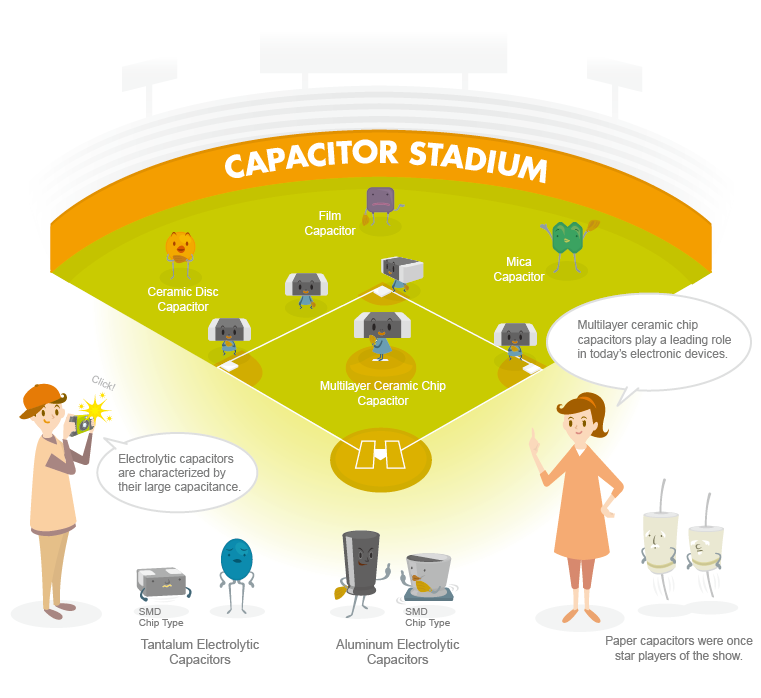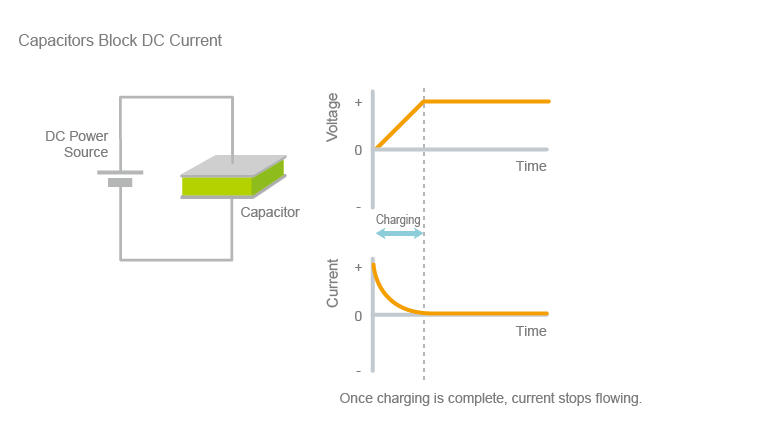Understanding the Types and Roles of Capacitors through Five Articles | The World of Power Capacitors
Part 1: Electronics and Capacitors

Electronic devices comprise a wide variety of electronic components. Capacitors, along with resistors and inductors (coils), are regarded as the three major passive components. Today, about one trillion capacitors are produced worldwide each year, 80% of which are multilayer ceramic chip capacitors, and 90% of which are made by Japanese manufacturers. While there is a multitude of capacitor types, the multilayer ceramic chip capacitor is the mainstay in today’s electronics society—and TDK is a leading global manufacturer of them.
- Multilayer ceramic chip capacitors have driven the miniaturization of electronic devices

- “Elektron” is Greek for “amber”

- Electrical science began with the study of frictional electricity

- Called “condenser” in Japanese, but “capacitor” in English

- Electric polarization and magnetic polarization are very similar phenomena

- Consumer use of multilayer ceramic chip capacitors began in Japan

Multilayer ceramic chip capacitors have driven the miniaturization of electronic devices
Over the last 30 years, the volumetric size of multilayer ceramic chip capacitors has been reduced by a factor of several hundred. It is not an overstatement to say that today’s era of mobile devices would not have arrived without the incredible miniaturization of multilayer ceramic chip capacitors. A mobile phone, for example, contains about 200 to 300 capacitors. The very first portable telephones that appeared in the mid-1980s were large, heavy contraptions hung from the shoulder. But thanks to the miniaturization of passive components, exemplified by multilayer ceramic chip capacitors, modern mobile phones have become palm-sized, multifunctional multimedia devices weighing only around 100 grams. The extreme miniaturization of electronic components has transformed our businesses and our daily lives.
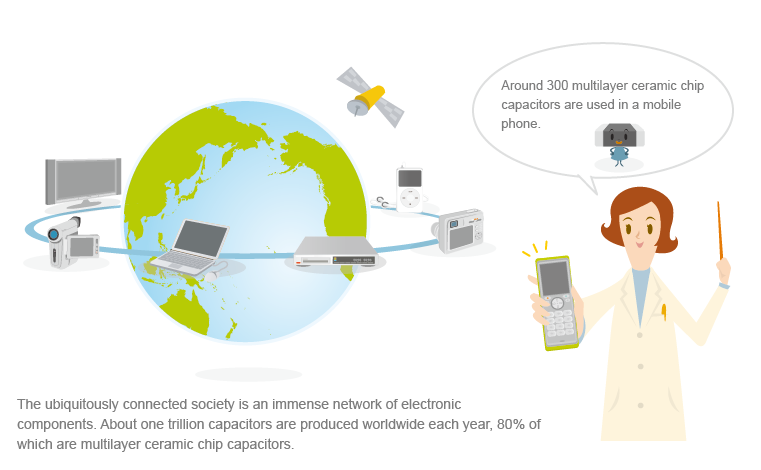
“Elektron” is Greek for “amber”
The seeds of discoveries and inventions are often hidden in familiar physical occurrences. The roots of electrical science can be traced as far back as B.C., when people noticed that amber jewelry attracted dust and ashes when rubbed with a cloth. This phenomenon is caused by frictional (static) electricity, similar to the way hair stands on end when a sheet of plastic is rubbed and held over the head. Amber is a material formed from pine resin, fossilized underground. It is a natural “plastic” that easily generates frictional electricity.
It was not until the Renaissance that frictional electricity became a subject of natural science. The English physician William Gilbert, who wrote De Magnete in 1600, showed that Earth was a giant magnet. He was also keenly interested in frictional electricity, and observed that frictional electricity occurs not only in amber but also in sulfur, crystals and fur. Gilbert named amber’s property of becoming electrified by friction as electricus. This is the origin of the term electricity, which derives from the Greek word elektron, meaning amber. There is an ancient Chinese proverb that roughly translates to “Amber draws away dust but not impurity; Magnets attract straight needles but not crooked ones.” In both Eastern and Western civilizations, the frictional electricity of amber certainly seems to have captured people’s minds as a mysterious phenomenon.

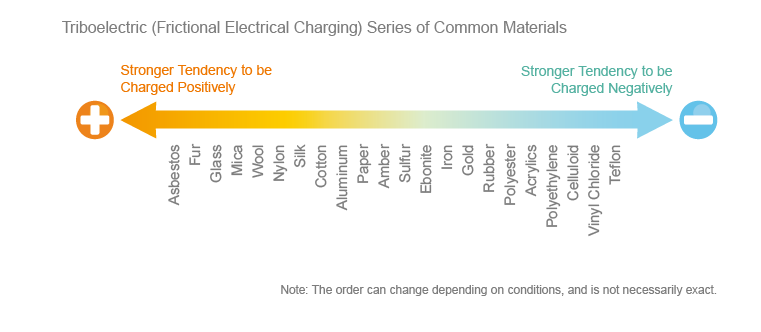
Electrical science began with the study of frictional electricity
The German scientist Otto von Guericke, known for his vacuum experiments with the Magdeburg hemispheres—who was also the mayor of Magdeburg in the 17th century—invented a device to generate frictional electricity efficiently. It was a large sulfur ball that produced static electricity when friction was applied to it, and he conducted various experiments with it.
The 18th century was a time when the study of frictional electricity progressed rapidly. Stephen Gray in England demonstrated that there are two types of materials: conductors that conduct electricity and insulators that do not. Charles Du Fay, a French scientist, noticed that frictional electricity generated in glass behaves differently from frictional electricity generated in resin. From this, he discovered that there are two kinds of electricity—the same kind repels each other, and different kinds attract each other. Later, “glass” electricity was referred to as positive electricity, and “resin” electricity as negative electricity.
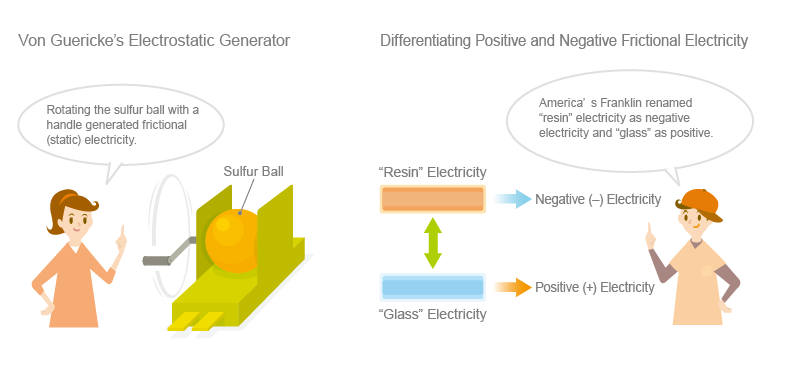
Called “condenser” in Japanese, but “capacitor” in English
The progenitor of the capacitor was the Leyden jar (a static electricity accumulator), invented independently by Ewald von Kleist in Germany and Pieter van Musschenbroek in the Netherlands between 1745 and 1746. A short time later, Benjamin Franklin in the United States demonstrated that lightning is an electrical phenomenon similar to the discharge of static electricity through his famous kite-flying experiment. The Leyden bottle was also used there.
In Italy, Alessandro Volta, who was deeply interested in electrical phenomena, improved upon an existing, portable electrostatic generator and called it the electrophorus. He later invented a device that stored static electricity and named it the condensatore. This is the origin of the name condenser—the initial name of the capacitor as we know it today. However, because devices used to liquefy refrigerants and some optical devices are also called condensers, the electrical component was later renamed to capacitor in English to avoid confusion. In Japanese, the term condenser remains to this day.
Around the time of Franklin’s kite-flying experiments, electrostatic generators made their way from the Netherlands to Nagasaki, Japan, where they became known as elekiters. Gennai Hiraga, a Japanese inventor, is well-known for obtaining and restoring one.
And thus, the curtain was lifted on electrical science. In the early days, however, stored frictional electricity was only used to put on eccentric shows or for the experimental treatment of diseases (electroshock therapy). It was not until the 19th century that capacitors came to be manufactured and used as components for electrical equipment.
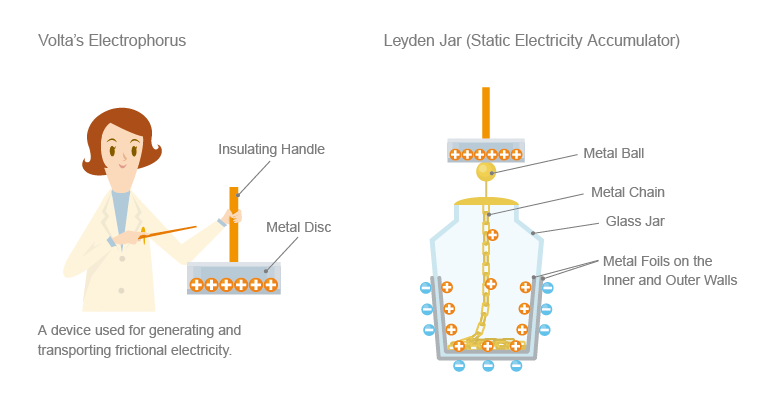
For more information, see the TECH-MAG article vol.6 Taking a hint from the box kite: the Wright brothers' airplane on the TDK website.
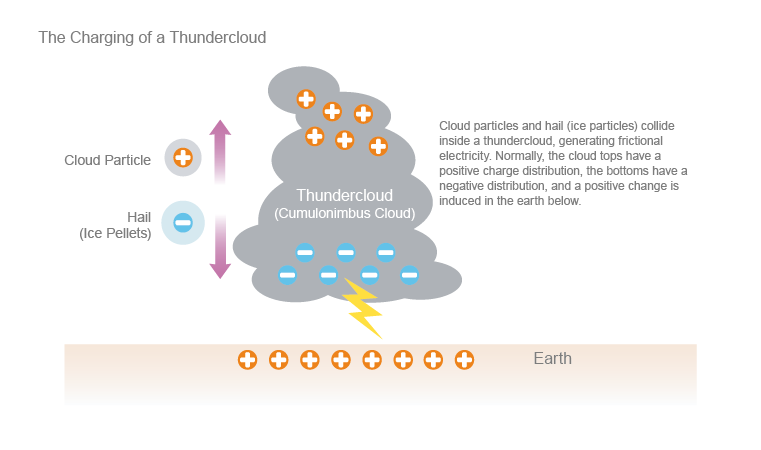
Electric polarization and magnetic polarization are very similar phenomena
The Leyden bottle is an excellent teaching tool for understanding the principle and mechanism of capacitors. Initially, Leyden jars were made of glass because it was thought that electricity could be stored in water. Later, improvements were made where the inner and outer walls of the jar were lined with metal foils. Imagine a Leyden jar flattened out, and you have the basic structure of a capacitor where two electrode plates face each other.
With Volta’s invention of the battery, it became known that electricity can be stored in a capacitor by simply connecting it to a battery—without any involvement of friction. An atom is composed of a positively charged nucleus and negatively charged electrons that surround it. Normally, a material’s positive and negative charges cancel each other out to make it electrically neutral. But when a battery or another device is used to apply an electric potential to an insulator, positive and negative charges are induced on opposite sides. This is called dielectric polarization, and insulators are called dielectrics in this context. This phenomenon is very similar to how a magnet attracts iron. Just as a magnet attracts iron by magnetically polarizing it into the north and south poles, a charged body attracts other nearby material by dielectrically polarizing it.
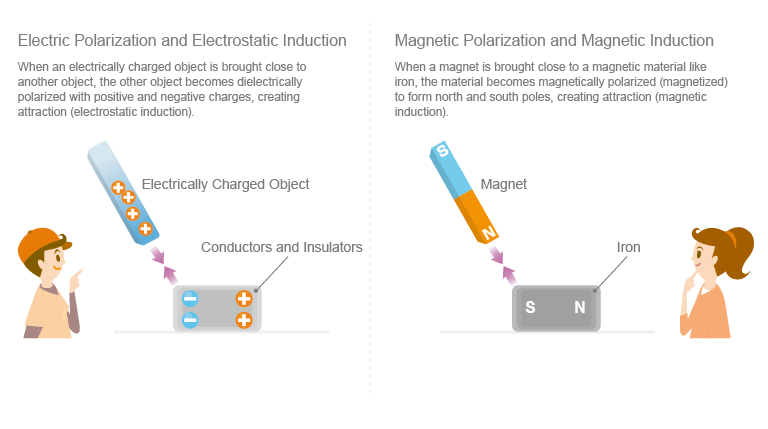
Consumer use of multilayer ceramic chip capacitors began in Japan
The ability of a capacitor to store an electric charge is called capacitance. The larger the surface area of the electrodes and the smaller the distance between them, the larger the capacitance. Capacitance can also be increased by placing a dielectric material between the electrodes. Practically, however, if they are to be used as electronic components, the electrodes cannot be too large. Two main techniques are used to make it more compact while maintaining a large electrode area. One is to wrap the electrodes and dielectric around each other like a scroll. Another is to stack the electrodes and dielectrics in a sandwich-like structure.
Mica flakes and paper were used as dielectrics for capacitors for a long time, but in the 1930s, a capacitor using titanium oxide as the dielectric was introduced. In the 1940s, barium titanate, a material with a remarkably high dielectric constant, was discovered. A multilayer ceramic chip capacitor is manufactured by stacking many thin layers of these dielectrics and electrodes. Originally developed in the United States, it was initially only used in highly specialized applications, such as space equipment. But in 1977, it was mass-produced in Japan for the first time in the world as an electronic component for consumer devices—namely, slim pocket radios. Since then, breakthroughs in materials and manufacturing methods have led to a dramatic reduction in size and increase in capacity, contributing substantially to the miniaturization, weight reduction, and increased functionality of electronic devices.
This has been a brief history of the capacitor, where it all began with the study of frictional electricity. In addition to storing electric charges, capacitors have the important utility of blocking direct current while allowing alternating current to pass. How these properties are utilized in the circuitry of electronic devices will be explored in the following article and beyond.
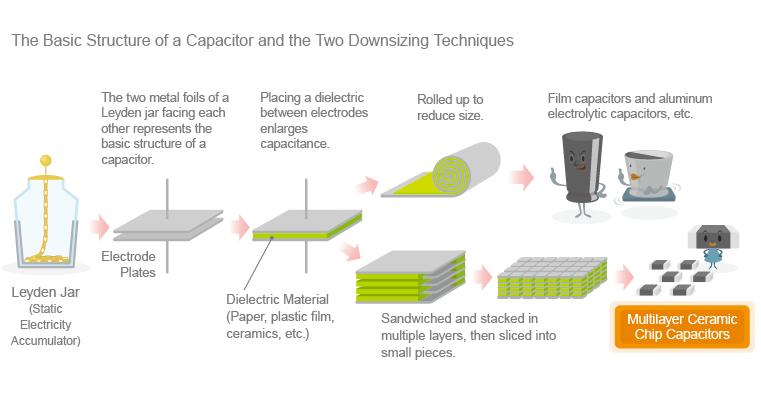
TDK is a comprehensive electronic components manufacturer leading the world in magnetic technology



